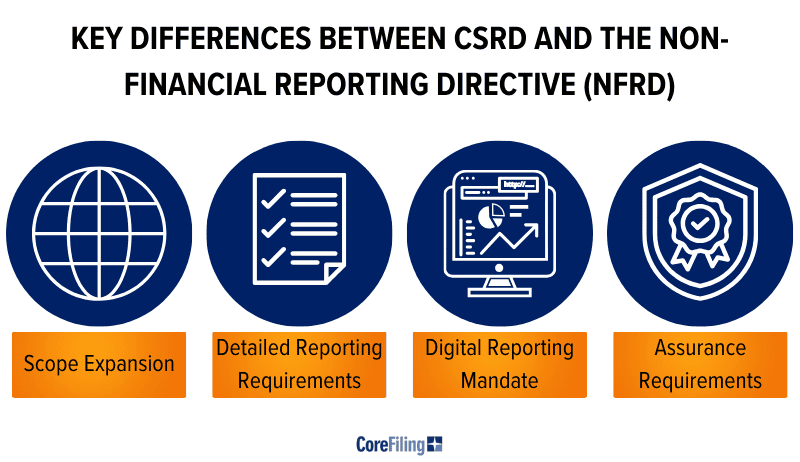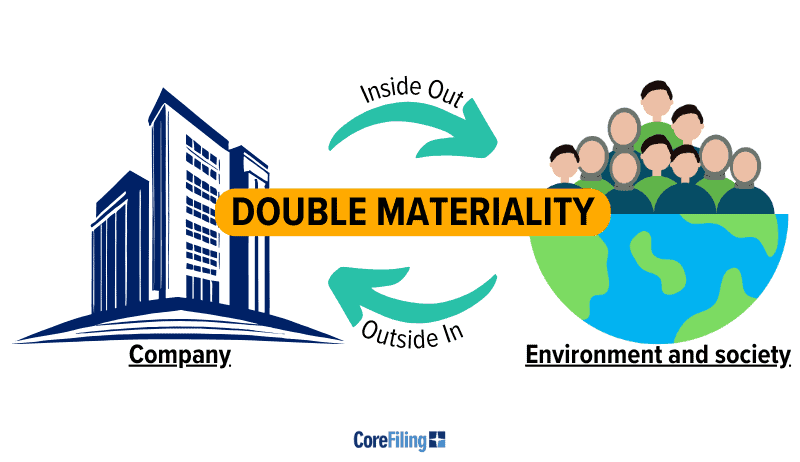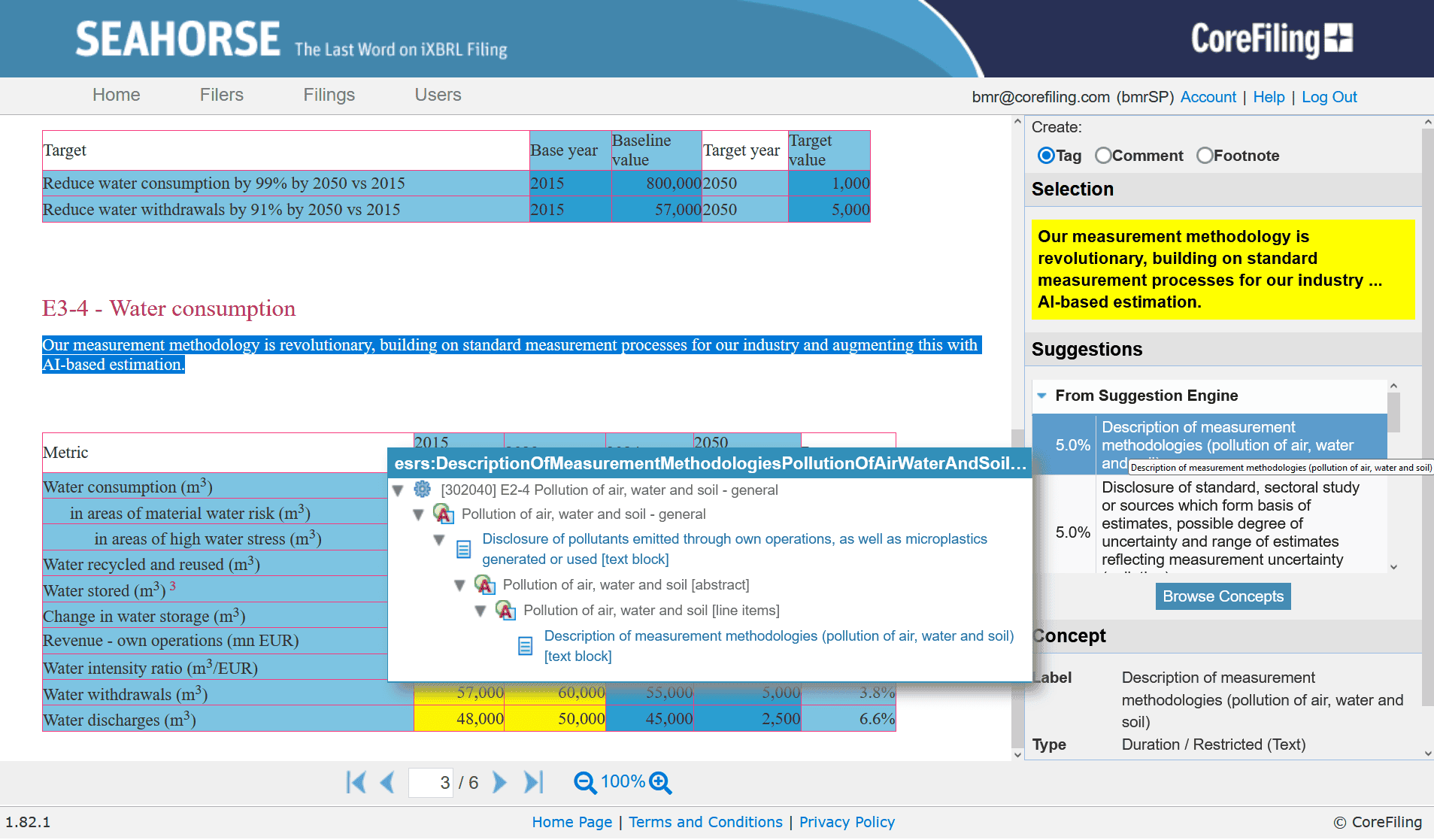Introduction
In today’s ever-evolving regulatory landscape, the Corporate Sustainability Reporting Directive (CSRD) and the European Sustainability Reporting Standards (ESRS) have become pivotal legislation for businesses across Europe and beyond. These standards not only shape how companies report on sustainability but also impact their operational transparency and compliance.
Understanding both CSRD and ESRS and their relationship with one another is crucial for organisations striving to meet the EU’s stringent regulatory requirements.
In this post, we dive into the European sustainability reporting framework, offering expert insights and practical guidance to help businesses navigate and implement CSRD effectively.
What is the Corporate Sustainability Reporting Directive (CSRD)?
The Corporate Sustainability Reporting Directive (CSRD) is a significant regulatory framework established by the European Union, designed to enhance corporate transparency in sustainability practices. Building upon the Non-Financial Reporting Directive (NFRD), the CSRD broadens the scope of reporting requirements, compelling large companies and listed SMEs to disclose detailed information on environmental, social, and governance (ESG) matters. This directive aligns with the EU’s broader sustainability objectives, ensuring that businesses contribute to global goals such as climate action and social responsibility. The CSRD applies to over 50,000 companies, making it a salient act in Europe’s commitment to sustainability.
Key Differences Between CSRD and the Non-Financial Reporting Directive (NFRD)
The CSRD has a far greater scope than the previous sustainability reporting standards set by the NFRD. So, what are the changes that we can expect in the coming years?
- Scope Expansion: The CSRD applies to a broader range of companies, including large businesses and listed SMEs, whereas the NFRD targeted only large public-interest entities.
- Detailed Reporting Requirements: CSRD mandates more comprehensive disclosures on ESG factors, ensuring greater transparency and comparability across industries.
- Digital Reporting Mandate: CSRD requires the use of digital reporting formats like XBRL, enhancing data accessibility and accuracy, a feature absent in the NFRD.
- Assurance Requirements: Unlike the NFRD, the CSRD introduces a requirement for external assurance, increasing the credibility of sustainability reporting.

What are the European Sustainability Reporting Standards (ESRS)?
The European Sustainability Reporting Standards (ESRS) are a set of detailed guidelines developed to make new sustainability reporting standards support the implementation of the Corporate Sustainability Reporting Directive (CSRD). Defined by the European Financial Reporting Advisory Group (EFRAG), these standards outline the specific ESG metrics that companies must report, ensuring consistency and comparability across industries.
ESRS were created to align with global sustainability initiatives, providing a comprehensive framework for businesses to disclose their environmental and social impacts. Companies must complete a double materiality assessment as demonstrated below.

The ESRS and CSRD work in tandem, with the ESRS offering the detailed reporting structure required under the broader CSRD framework.
How CSRD and ESRS Work Together in Practice
The Corporate Sustainability Reporting Directive (CSRD) and the European Sustainability Reporting Standards (ESRS) are designed to work together, ensuring robust corporate sustainability transparency and reporting across the EU. Here’s how they function in tandem:
Framework and Implementation
The CSRD sets the legal requirements for sustainability reporting, while the ESRS provides the detailed standards and guidelines for fulfilling these requirements.
Consistency and Compliance
ESRS ensures that all companies adhere to a consistent reporting structure as mandated by the CSRD, enabling comparability and compliance with EU regulations.
Support and Clarity
Together, they offer a clear, structured approach to sustainability reporting, empowering businesses to meet regulatory expectations effectively.
How ESRS Reporting Processes are Structured
The European Sustainability Reporting Standards (ESRS) structure the reporting process around three core pillars: Environmental, Social, and Governance (ESG). Each pillar is meticulously detailed to ensure comprehensive disclosure, appropriate reporting processes and alignment with global best practices.
1. Environmental: Companies must report on their impact on climate change, resource use, and biodiversity. This includes detailed metrics on carbon emissions and energy consumption, in line with frameworks like the Greenhouse Gas Protocol.
2. Social: This pillar focuses on human rights, labour practices, and community engagement. Companies are required to disclose information on diversity, employee well-being, and social impact, referencing standards such as the UN Guiding Principles on Business and Human Rights.
3. Governance: Governance reporting covers corporate ethics, anti-corruption measures, and board diversity. This ensures transparency in decision-making processes and accountability, adhering to global governance frameworks like the OECD Principles of Corporate Governance.
The ESRS reporting process is designed to be both comprehensive and flexible, allowing companies to demonstrate their commitment to sustainability while ensuring compliance with the Corporate Sustainability Reporting Directive (CSRD). This structure not only enhances transparency but also supports organisations in achieving their sustainability goals effectively.
A Global Reporting Initiative
As global economies become increasingly interconnected, there is a growing movement towards the standardisation of sustainability reporting requirements. The alignment of frameworks such as the ESRS with international standards like those set by the International Sustainability Standards Board (ISSB) suggests a trend towards unified global reporting practices. This convergence aims to simplify compliance for multinational companies and enhance the comparability of sustainability data across jurisdictions.
In the future, it is likely that many sustainability requirements will be harmonised globally, providing a consistent and transparent approach to ESG reporting worldwide. This standardisation will support more effective global strategies for sustainability and transparency.
Paving the Way for a Sustainable Future
The Corporate Sustainability Reporting Directive (CSRD) and the European Sustainability Reporting Standards (ESRS) are strategically vital for companies aiming to lead in sustainability. These frameworks provide a clear pathway for organisations to integrate sustainability into their core operations, offering competitive advantages such as enhanced transparency, stakeholder trust, and regulatory compliance.
Mairead McGuinness, the European Commissioner for Financial Services, Financial Stability, and Capital Markets Union, highlighted the significance of these standards, stating,
“The standards we have adopted today are ambitious and are an important tool underpinning the EU’s sustainable finance agenda. They strike the right balance between limiting the burden on reporting companies while at the same time enabling companies to show the efforts they are making to meet the green deal agenda, and accordingly have access to sustainable finance.”
Read our blog about how you can pepare for the CSRD.
Our Data Tagging Solutions
At CoreFiling, we offer a comprehensive suite of solutions designed to simplify compliance with CSRD and ESRS. Our Seahorse software automates the intricate process of reporting standard tagging financial data using XBRL, ensuring your reports meet the highest regulatory standards with precision. With True North, our data platform, we enable integration of financial and non-financial data, supporting accurate and comprehensive ESG reporting.

Our solutions not only enhance data accuracy but also significantly reduce the time and effort required for compliance, empowering your organisation to meet sustainability goals efficiently. Contact us now to learn more.
Frequently Asked Questions (FAQs)
Here are some frequently asked questions about the relationship between the CSRD and the ESRS.
What Are The Main Objectives Of The CSRD?
The main objectives of the Corporate Sustainability Reporting Directive (CSRD) are to enhance corporate transparency in sustainability reporting and to standardise the disclosure of environmental, social, and governance (ESG) information across companies subject the EU. By expanding reporting requirements to a broader range of companies, the CSRD aims to ensure that stakeholders, including investors and regulators, have access to reliable, comparable data. This initiative supports the EU’s broader goals of promoting sustainable business practices and achieving climate neutrality by 2050.
How Does The ESRS Complement The CSRD?
The European Sustainability Reporting Standards (ESRS) complement the Corporate Sustainability Reporting Directive (CSRD) by providing the detailed guidelines necessary to meet the CSRD’s reporting requirements. While the CSRD mandates what needs to be reported, the ESRS outlines how to do it effectively, ensuring consistency and comparability across industries. This relationship enhances transparency and enables companies to align their sustainability performance with both EU regulations and global sustainability goals, making ESG reporting more comprehensive and standardised. The ESRS ensures that companies can accurately report their sustainability efforts in a way that meets the rigorous standards set by the CSRD.
What Companies Are Required To Comply With CSRD And ESRS?
The Corporate Sustainability Reporting Directive (CSRD) and European Sustainability Reporting Standards (ESRS) mandate compliance for large public-interest entities, including listed companies, banks, and insurers, with over 500 employees from 2024. From the financial year 2025, the requirements expand to large companies with over 250 employees, €40 million in turnover, or €20 million in total assets. Additionally, listed SMEs will be required to comply by 2026. These timelines ensure a phased approach, allowing companies to align with the rigorous reporting standards and contribute to greater transparency and sustainability across the EU. For more details, visit the CSRD timeline blog.


